Top Flooring Choices Examined
If you are looking to sell your home soon (or even a few years down the road), it’s helpful to know what buyers are searching for. I work with many new home buyers, so I see what they are doing before they move in. Trends and preferences may vary based on area of country and construction of home. These preferences are for the Northeast and Mid Atlantic states and focuses on single family homes (as opposed to apartments or rentals). I will start with overall trends, and then go room by room.
By far, the biggest preference is towards hardwood flooring. This should not come as no surprise to anyone, as it is not a new trend. This preference has been growing since the early 1980’s and became the preferred surface in the 1990’s, and it continues to grow year after year.
Realtors will confirm this, as this is often a requirement for the homes that many people look for, and some will screen homes out that don’t have hardwood. In a recent, unscientific survey I did on my site, 95% of consumers prefer hardwood for the common living areas (i.e. living room, dining room, and family room.)
So, if you have hardwood flooring and if it’s hiding underneath your carpet, by all means, rip up the carpet and refinish the hardwood floors. It will instantaneously improve the value of your home, and help it sell faster. If you can’t afford to do all of it, or if it’s too inconvenient, at least start with one room to show buyers what the wood could look like.
Even just removing the carpet to show the hardwood floors is a big step in the right direction. Many are pleasantly surprised by the relatively low cost of refinishing hardwood, so it’s usually an investment that gets a strong ROI (return on investment). And, it will help sell your house faster. Take a look as we examine what types of flooring home buyer’s prefer the most!
Room By Room Flooring Preferences
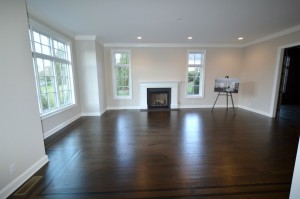 Living room/dining room/family room – areas on the main level – By far, the preference here is for hardwood. No other surface even comes close. If you have hardwood in these areas, show it off. If you don’t have hardwood in the living room/dining room, I would strongly consider adding it. You will get your return on investment (assuming you have a plywood sub-floor…if you have concrete sub-floor it will be more expensive). Choose either very dark or very light floors, as these are the most stylish. And, satin finish is the most popular sheen.
Living room/dining room/family room – areas on the main level – By far, the preference here is for hardwood. No other surface even comes close. If you have hardwood in these areas, show it off. If you don’t have hardwood in the living room/dining room, I would strongly consider adding it. You will get your return on investment (assuming you have a plywood sub-floor…if you have concrete sub-floor it will be more expensive). Choose either very dark or very light floors, as these are the most stylish. And, satin finish is the most popular sheen.
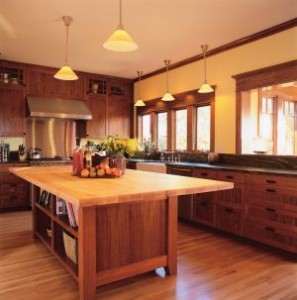 Kitchens – Believe it or not, now hardwood is now the preferred flooring surface for kitchens. This is followed closely by tile. Hardwood is often preferred as it’s more in style, easier on your feet, makes space look larger and easier to clean.
Kitchens – Believe it or not, now hardwood is now the preferred flooring surface for kitchens. This is followed closely by tile. Hardwood is often preferred as it’s more in style, easier on your feet, makes space look larger and easier to clean.
Hardwood is often less expensive, too. You can read more about it in this article: Kitchen floors – hardwood vs. tile. But, either way, it should, if you are remodeling, hardwood or tile is the way to go w/ 90% of homeowners preferring one of these two surfaces (10% prefer laminate, vinyl, linoleum or cork).
If you are just preparing your home for sale, and/or not doing a full remodel, your choices may be limited due to height of cabinets and appliances, so definitely involve a flooring expert before your run into an issue where you might either lock your appliances in or worse yet find that they don’t fit.
If you are selling your house, I would recommend you consult with your Realtor and/or stager before making changes here. It is easy to spend a lot of money in the kitchen and not get back your return on investment.
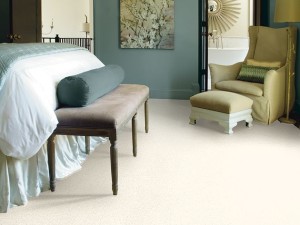 Bedrooms – Homeowners seem to be split on this one. Slightly more than half (56%) prefer hardwood for the bedrooms and 44% prefer carpet. This preference often has been influenced by homeowner’s experiences growing up and whether they are concerned about their feet being cold in the morning. But, either way, virtually all home buyers will NOT keep the carpet you have in your bedrooms.
Bedrooms – Homeowners seem to be split on this one. Slightly more than half (56%) prefer hardwood for the bedrooms and 44% prefer carpet. This preference often has been influenced by homeowner’s experiences growing up and whether they are concerned about their feet being cold in the morning. But, either way, virtually all home buyers will NOT keep the carpet you have in your bedrooms.
They will either replace them or they will add hardwood (or refinish if you have hardwood underneath the carpet). Buyers do not like to live with other people’s carpets as there are usually odors and/or germs in there…or a perception that they are present. They seem to be even more concerned if they have young kids and/or babies.
So, those carpets will get ripped up – one way or another. (Unless the homeowner has moved out and then installed new carpets…and this will be obvious as there will be no furniture marks on the carpet). A small percent of customers will clean them, but my guess is this is about 10% and rarely will those furniture marks come out.
So, what should you do if you have carpet in the bedroom and you are selling your house? This depends! And, it’s a good idea to consult your Realtor. If your carpet is in bad condition, and if it smells, it’s best to get rid of it somehow. Leaving dirty carpet in place will definitely hinder your sale, especially if there is a bad odor.
If you have hardwood underneath the carpet, rip up the carpet and refinish the hardwood. (BTW, this is usually LESS expensive than replacing it with carpet)…you can read more here: If you have hardwood underneath the carpet, is it better to refinish the wood or re-carpet? If you can’t afford to refinish the floors, at least rip up the carpet. This is a step in the right direction to improving the value and saleability of your home.
If you have plywood underneath the carpet, you may prefer to re-carpet as this will be less expensive than adding hardwood. Hardwood will often give you a better return on investment, but it will also cost you more. And, be sure that you consult your real estate agent as they will know the types of flooring used and preferred in your specific neighborhood.
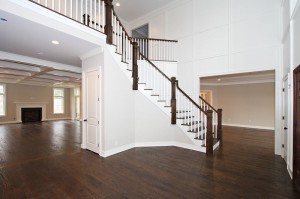 Entryways – This one depends on the size of your entryway and how it flows with the rest of the home. More often than not, most new home buyers prefer to have wood in the entry, if there is wood in the adjoining areas. When you convert this area to wood, it makes the space look larger and more cohesive.
Entryways – This one depends on the size of your entryway and how it flows with the rest of the home. More often than not, most new home buyers prefer to have wood in the entry, if there is wood in the adjoining areas. When you convert this area to wood, it makes the space look larger and more cohesive.
In fact, many new home buyers convert perfectly good tile hardwood when they are refinishing the floors. (This of course assumes that you have plywood underneath and that your entryway is not on a cement slab). The 2nd logical choice is to install tile in the entryway as it is waterproof.
If you are in the process of selling your house, it may or may not be worth it to change this area. If your flooring is in bad condition (e.g. if til,e is cracking or vinyl is peeling) and/or the space looks very dark (e.g. if you have slate tiles), it may be worth it to change, especially since this is your first impression of the house. If it’s just a small area, though, it may not make a huge difference and you may find the cost to fix a small area seems high. (Smaller jobs cost more per sf). But, if you can combine it with another project, it may be much more cost effective.
 Bathrooms – This one should be obvious – tile is the preferred surface! Do not even attempt to put hardwood in a here (assuming there is a shower or bathtub). It will warp and it won’t last very long. Bathrooms are often expensive to renovate, and very often you will not get your return on investment here if you are selling.
Bathrooms – This one should be obvious – tile is the preferred surface! Do not even attempt to put hardwood in a here (assuming there is a shower or bathtub). It will warp and it won’t last very long. Bathrooms are often expensive to renovate, and very often you will not get your return on investment here if you are selling.
Kitchens and bathrooms sell homes…but they also cost a lot of money. So if your bathroom is in bad shape, have a discussion with your Realtor on your selling strategy. Sometimes, it’s better to just leave it and let the new home buyer choose what they prefer; other times, it’s such an eye sore that you have no choice. In terms of style, most prefer a natural stone look – often a porcelain tile will look best and be cost effective. If you have the colored (and dated) 4 x 4 glazed tiles (pink, yellow, blue, green), a less expensive alternative is to re-glaze them white.
While tile is the strong preference for bathroom floors, luxury vinyl is often an acceptable alternative if you need to save money. Luxury vinyl has come a long way, and it does look like hardwood or tile, pending on which selection you prefer. Luxury vinyl should only be used on the floors, and never on the walls. Also, wainscoting is very stylish for bathroom walls (but not good for the shower area).
Powder rooms – New home buyers generally prefer either hardwood for powder rooms or tile. Ironically, many that install tile in powder rooms, select tile that looks like hardwood. Both tend to work really well in this area.
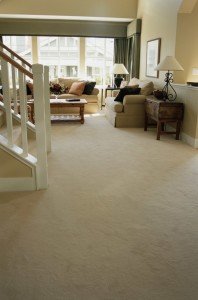 Dens (on lower levels) – Dens are tricky. While most prefer hardwood, many end up with carpet as it’s more affordable. This all depends on whether the den is on a concrete slab or over plywood, as this has major implications for cost, as well as moisture and warmth in the room. If the room is over plywood, and if it’s on or above ground level (on grade), most prefer hardwood.
Dens (on lower levels) – Dens are tricky. While most prefer hardwood, many end up with carpet as it’s more affordable. This all depends on whether the den is on a concrete slab or over plywood, as this has major implications for cost, as well as moisture and warmth in the room. If the room is over plywood, and if it’s on or above ground level (on grade), most prefer hardwood.
If it’s over a concrete slab, there can be many complications and added expenses as the slab is often neither level nor smooth. And, many rooms like this tend to have poor insulation, so often carpet is a more practical and economic choice both for initial installation and for ongoing heating bills (at least here in the northeast).
Basements – Most people are all over the board on this and basements are very tricky. Most prefer hard surfaces (as they are concerned about moisture), but when they hear the prices on hard surfaces, they often revert back to carpet as it is much less expensive, especially given the complications that most basements in the northeast have – they are over concrete, they are cold, floor isn’t level and surface isn’t smooth.
 And, in some basements there is asbestos tile, further limiting the options. The other factor is that most people want to spend less in this area since it’s a basement…so it’s ironic that this area often costs more. If you are selling your home, this is probably the area that will get you the least return on investment when selling your home as it’s the basement.
And, in some basements there is asbestos tile, further limiting the options. The other factor is that most people want to spend less in this area since it’s a basement…so it’s ironic that this area often costs more. If you are selling your home, this is probably the area that will get you the least return on investment when selling your home as it’s the basement.
Steps – Most home buyers prefer hardwood steps with a carpet runner. The carpet runner is for safety, as well as style. This is followed by carpet on steps, and then that is followed by just plain hardwood on the steps. If you are selling your home, and you have carpet on the steps, but hardwood underneath, my advice to you is to rip up the carpet and refinish.
Let the new homeowner pick out their own runner for the steps, rather than trying to guess their style. Different people have different preferences, and you are more likely to be wrong than right here. The types of flooring home buyers prefer comes from many years of experience!
Other useful flooring articles:
- What types of flooring give you the best return on investment
- Eleven top flooring choices you need to know about via HGTV.
- What stain colors are most in style
This article was written by flooring expert, Debbie Gartner. Debbie is the owner of Floor Coverings International in Westchester, NY. 914-937-2950.








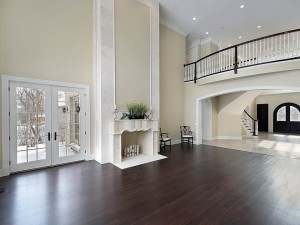
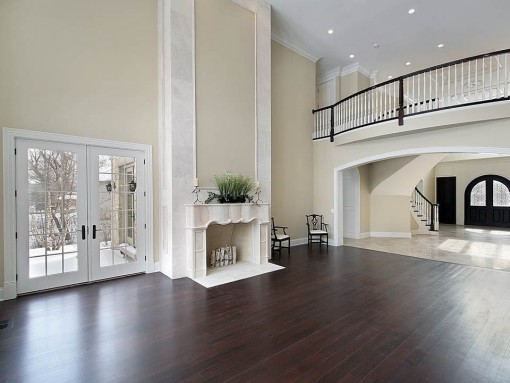



Bill,
I know you have the market in Mass. I was born in N. Adams Mass. The end result i’d simply, do what is best for your client!!! In the end we represent the buyer or the seller.( Sometimes both) .. Doesn’t always mean that we have the whole thing right!!
Bill – Thank you so much for sharing my flooring article on your site. I hope that home buyers and sellers find this info handy.